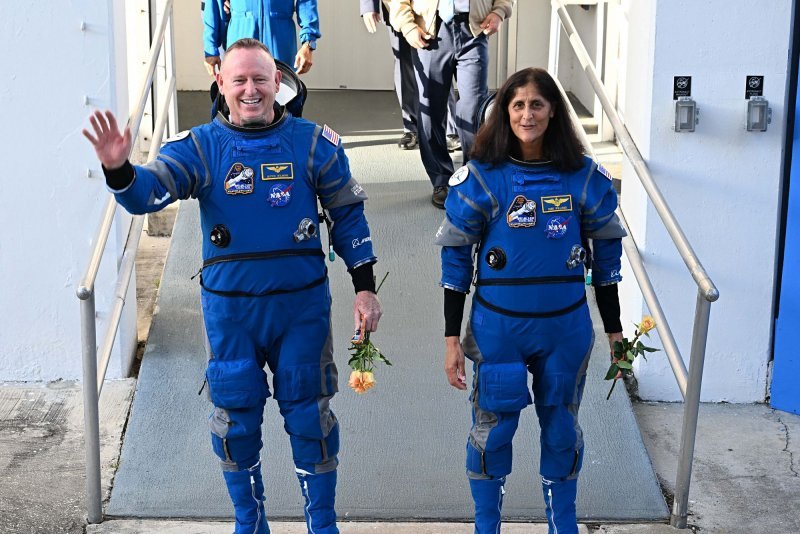
Stranded in Space: The Long Awaited Return of Suni Williams and Butch Wilmore
Stranded in Space: The Long Awaited Return of Suni Williams and Butch Wilmore
Written by: Keya Gambhir
Two NASA astronauts, Sunita "Suni" Williams and Barry "Butch" Wilmore, have been living in space for much longer than planned. What was supposed to be a short mission to the International Space Station (ISS) has turned into one of the longest stays ever. They have now been in space for over 280 days! Here’s what happened and what you need to know about their situation.
The Mission That Went Wrong
Suni Williams and Butch Wilmore launched into space on June 5, 2024, aboard Boeing’s Starliner spacecraft. They were supposed to co-pilot this spacecraft on its first crewed flight to orbit. Both astronauts were experienced space travelers, having each been on at least two space missions before. However, their mission quickly turned into a longer stay when the Starliner experienced serious technical problems.
The spacecraft had issues with helium leaks and propulsion, which delayed their return. Because of these issues, NASA had to decide not to bring them back in September 2024, as originally planned. They ended up staying in space much longer than expected, with no clear return date for several months.
Why Are They Stuck in Space?
While astronauts on the ISS usually stay for about six months, Williams and Wilmore have been in space for over 280 days and could be there even longer. NASA and Boeing decided to wait for a better option to bring them home safely.
The return journey was delayed until a new crew mission could safely replace them. The launch of SpaceX’s Crew-10 mission, launched successfully on March 14, 2025, is designed to bring fresh astronauts to the ISS, allowing Williams and Wilmore to come back to Earth. Weather permitting, the astronauts could land as soon as today, March 18, 2025, in the evening.
How Long Can Humans Stay in Space?
The longest a human has ever spent in space is 437 days! That record was set by Russian cosmonaut Valeri Polyakov aboard the Mir space station in the 1990s. While staying in space for such a long time can be dangerous for human health, astronauts like Williams and Wilmore are trained to handle the risks of extended missions. NASA has learned a lot from their long stay in space.
Besides Williams and Wilmore, only a few astronauts have spent longer periods in orbit, including Frank Rubio (371 days), Mark Vande Hei (355 days), Scott Kelly (340 days), and Christina Koch (328 days). NASA’s Peggy Whitson holds the record for the most total days in space, having spent 675 days in orbit.
What’s Next for Williams and Wilmore?
As Williams and Wilmore prepare for their return, they are still working hard aboard the ISS. They have been conducting research, helping with experiments, and supporting station operations. Despite the long wait, the astronauts have remained positive and focused on their tasks.
Now that SpaceX’s Crew-10 mission has launched, the astronauts are getting closer to coming back to Earth. The Crew-10 team docked on the ISS on March 16, 2025, and after their arrival, Williams and Wilmore are boarding their spacecraft to return home.
So, after 280+ days, Suni Williams and Butch Wilmore are finally on their way back to Earth. It's been a long and challenging mission, but they’re coming home soon—and we’ll be able to watch it all unfold!
References
Financial Express. 2024. "Science: Countdown Begins for Sunita Williams and Butch Wilmore’s Return to Earth; NASA Confirms Date, Shares Splashdown Time." Financial Express, March 16, 2024. Accessed March 16, 2025. https://www.financialexpress.com/life/science-countdown-begins-for-sunita-williams-and-butch-wilmores-return-to-earth-nasa-confirms-date-shares-splashdown-time-3778993/.
NASA Science. "Types of Solar Eclipses." Accessed March 15, 2025. https://science.nasa.gov/eclipses/types.
Royal Museums Greenwich. "Solar Eclipses Explained." Accessed March 15, 2025. https://www.rmg.co.uk/stories/topics/solar-eclipses-explained.
Space.com. "Where Will the Partial Solar Eclipse Be Visible in March 2025?" Accessed March 15, 2025. https://www.space.com/where-partial-solar-eclipse-visible-march-2025.
Time and Date. "Partial Solar Eclipse on March 29, 2025." Accessed March 15, 2025. https://www.timeanddate.com/eclipse/solar/2025-march-29.


